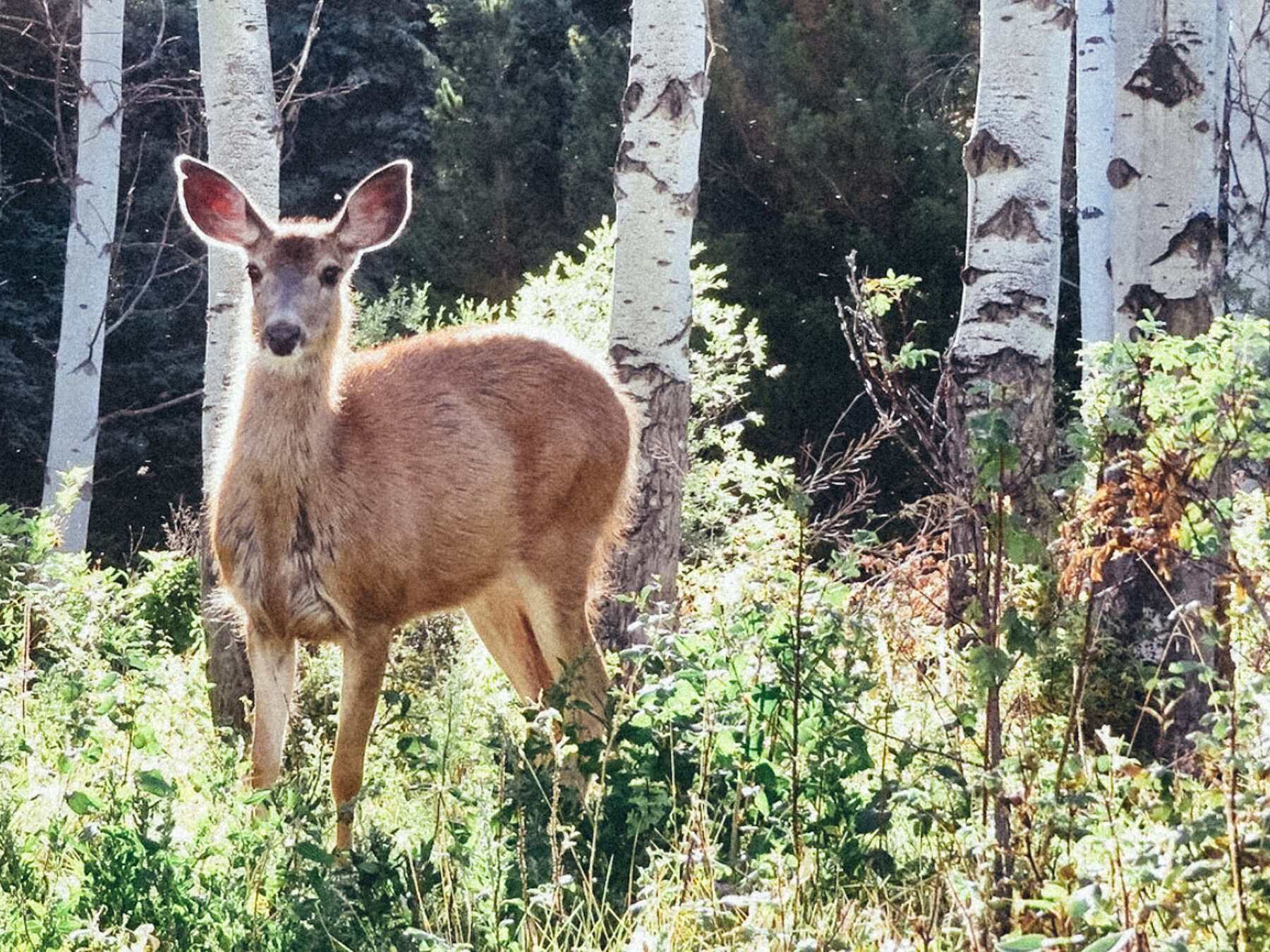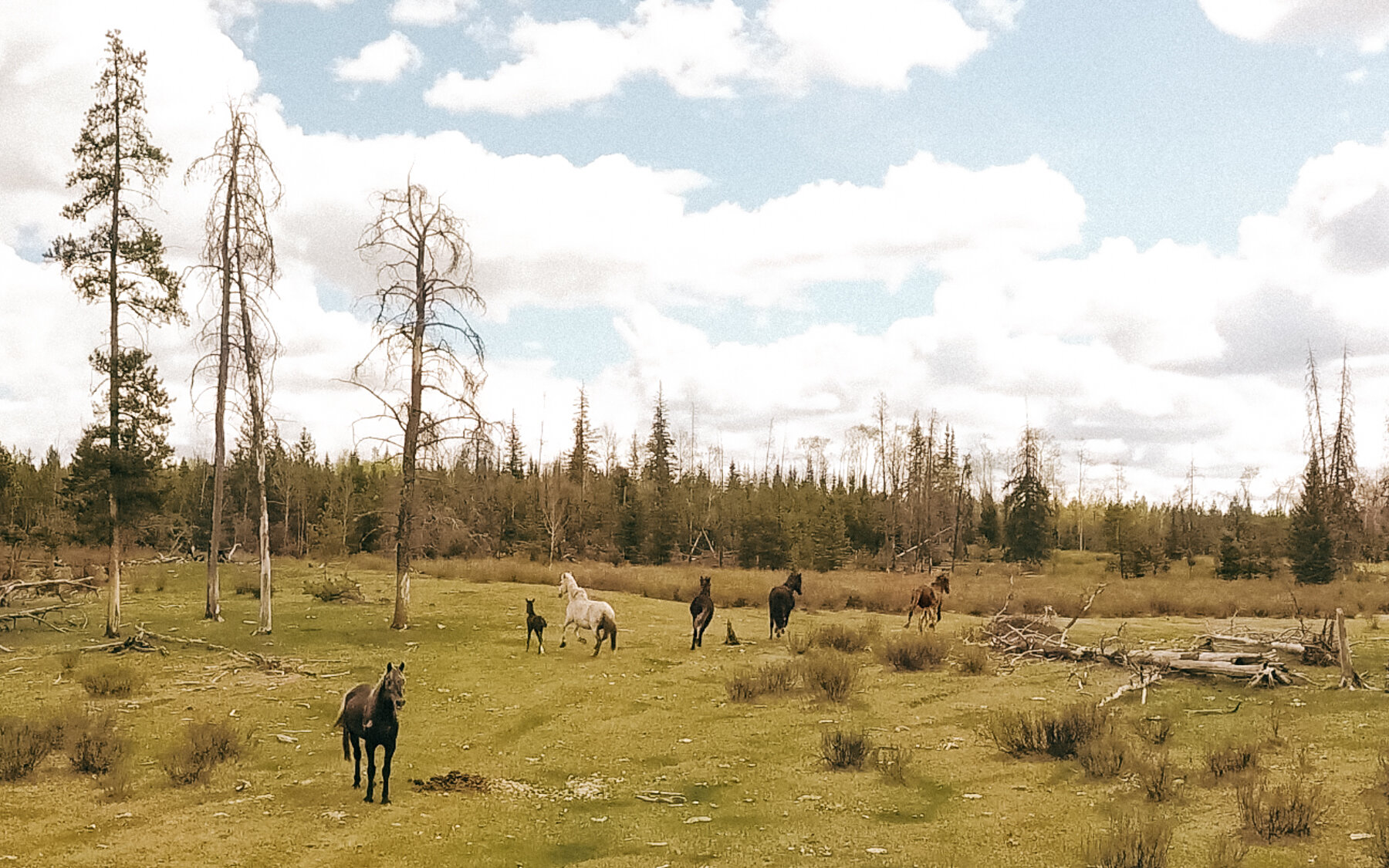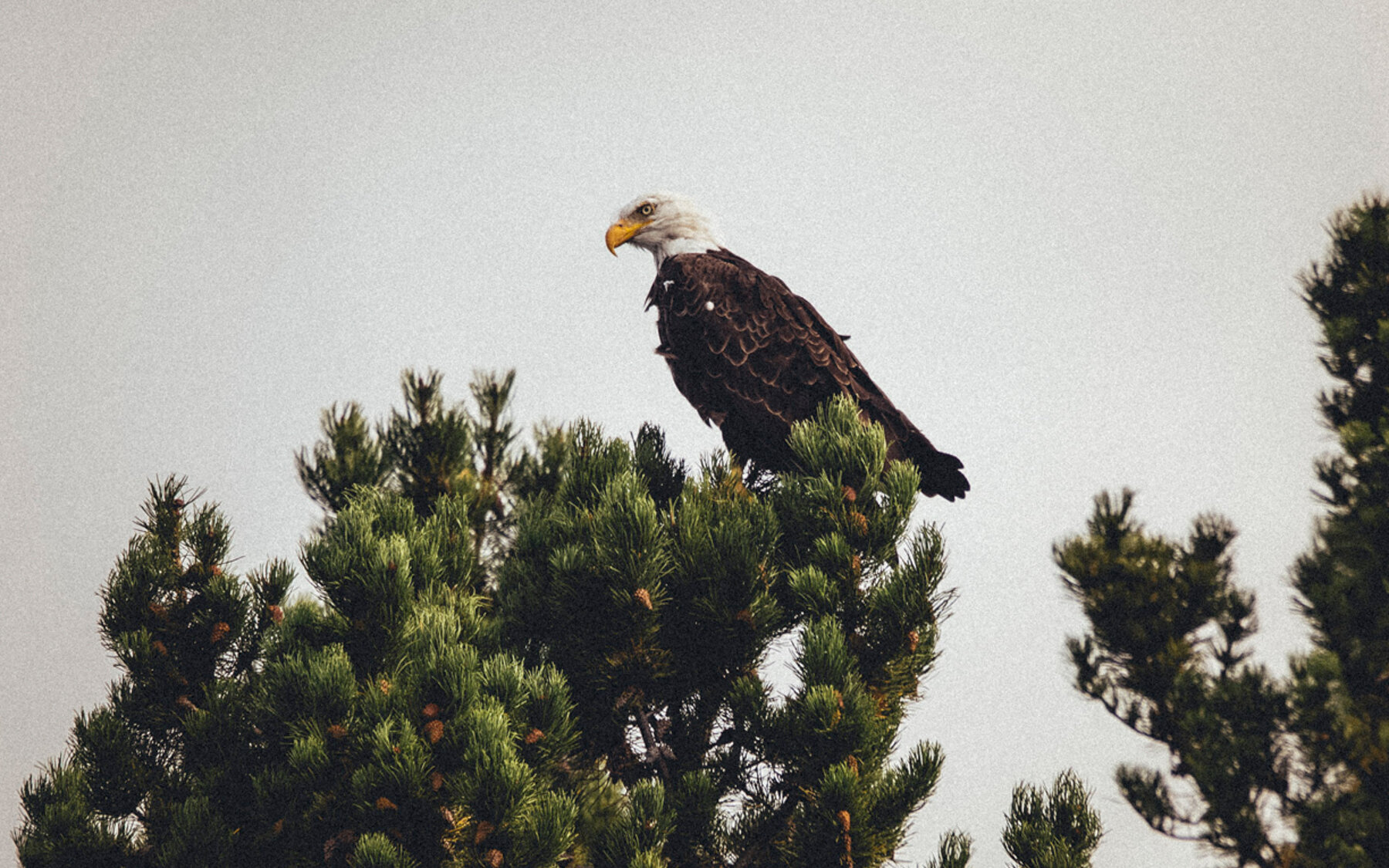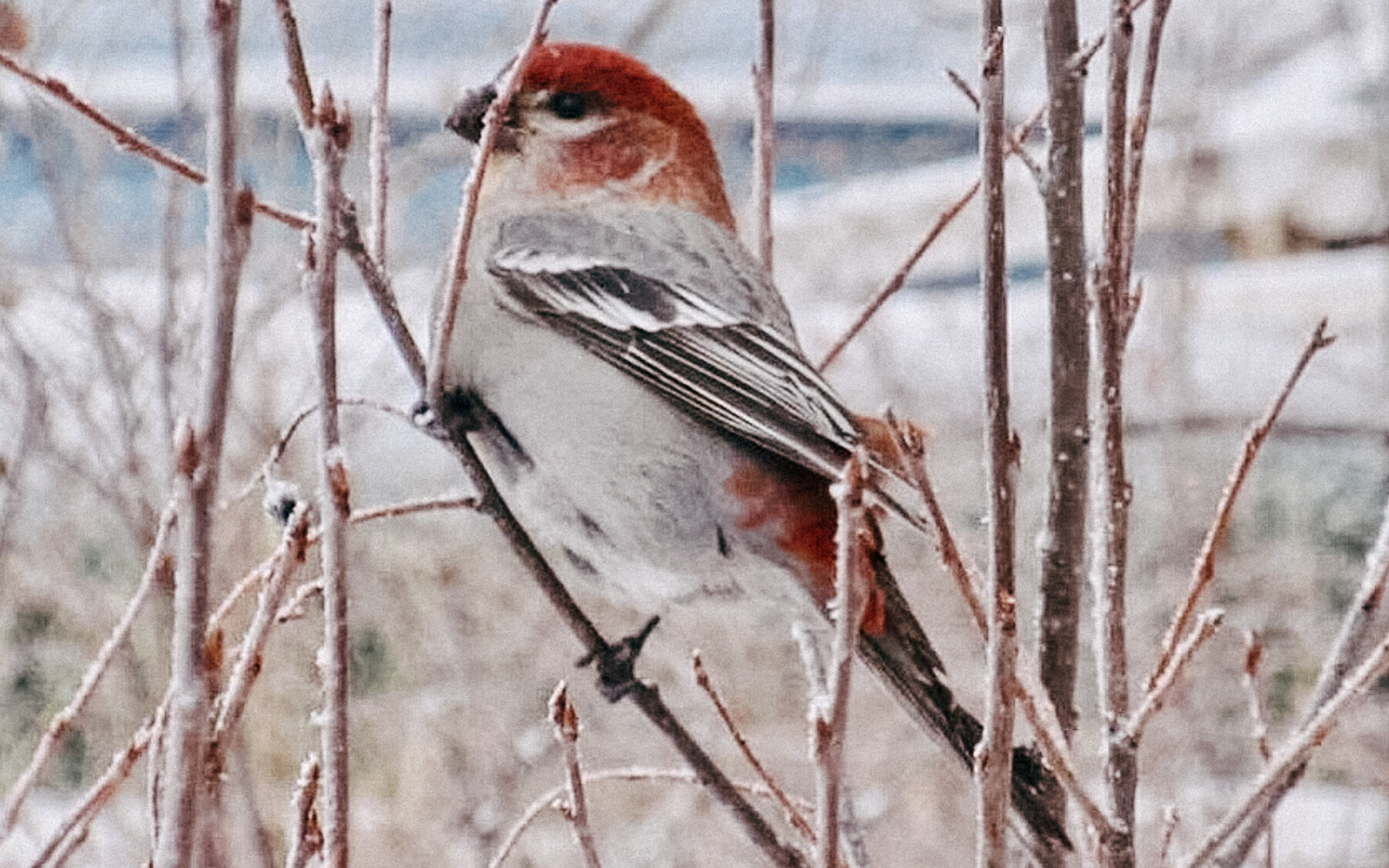
Wildlife
Characteristic wildlife of the TFS area include mountain goat, mule deer, California bighorn sheep (in eastern parts of the region), moose, grizzly and black bear, cougar, bobcat, lynx, gray wolf, coyote, red fox, mink, fisher, marten, otter, beaver, marmot, and snowshoe hare.


Human Impact
Wildlife in roaded areas is extensively hunted and trapped by both indigenous and non-indigenous populations. Rapid logging development since the 1980’s with the resulting road networks has increased hunting pressure significantly.
However, nearly all logging, agricultural, and settlement activity is confined to the Plateau and to the Plateau/Mountain interface.
South and west of this interface the TFS area of interest is essentially unroaded, with minimal human impact.
This large area on the eastern slopes of the Pacific Ranges combined with the extensive unroaded areas of the Great Bear Rainforest on the western slopes create what is likely the largest wilderness area in western Canada.


Grizzlies
Grizzly populations are of particular interest and are indicative of the overall good ecological health of the area. Grizzly sightings are common in both the Tatlayoko and Chilko Valleys. Studies conducted from 2006 – 2012 detected 225 individual grizzlies in the area, with a particular concentration in the fall around the salmon resources of the upper Chilko River. The actual number of bears is likely much higher.
Many of the grizzlies detected along the upper Chilko were also detected elsewhere, some as far away as Gold Bridge, BC. Researchers estimate that the salmon resource of the upper Chilko influences grizzlies in an area over 41,000 square km in size. To put this area in perspective, it is over 4 times the size of Banff, Yoho, and Kootenay National Parks combined and over 4.5 times the size of Yellowstone National Park.
With its large expanses of wilderness, rich habitat zones, and small human population, the West/Central Chilcotin is likely an area of fundamental importance for the future of grizzly bears.
Read the results of the 7-year study of Tatlayoko and Chilko grizzlies here.
Ungulates
Northern Mountain caribou are present in the northern and western parts of the area, typically spending summers in the alpine of the Rainbow and Itcha-Ilgachuz Ranges, where calving takes place, and winters in low and mid-elevation old-growth forests. Arboreal lichens are an important food source.
Moose arrived in the Chilcotin in the 1930’s and, until recently, were common. The name for this species is the same in both the Tsilhqot’in and English languages—“moose”—linguistic evidence for moose as relative newcomers to the region.
Mule deer are present throughout the Chilcotin, with increasing sightings of whitetail deer, even as far west as the Tatla Lake area. Elk are generally not present in the area, although there are reports in the Tatlayoko Valley of recent sightings of elk. These animals may have extended their range naturally, or they may have been introduced. Large elk antlers found in Plateau wetlands indicate that elk inhabited the region three to four hundred years ago.

Wild Horses
Horses are an interesting part of the wildlife mix of the region. In recent years wild horses of the Brittany Triangle (between the Chilko and Taseko Rivers) and of the Nemiah Valley have received considerable publicity. Wild horses also occur elsewhere on the Plateau, such as in grasslands north of Tatla Lake and north of Redstone.
Birds
The rich and varied birdlife of the TFS area-of-interest is a direct reflection of its diversity of habitats. With extensive grasslands to the east; innumerable lakes both big and small and associated wetlands; forest types ranging from aspen parkland, interior Douglas-fir, lodgepole pine, riparian cottonwood, and willow/alder groves to subalpine forests of spruce and whitebark pine; there is a wealth of opportunity for a wide range of species, including several that are at-risk and/or at the southern or northern limits of their range. The region is also a contact zone for several closely related species pairs such as Willow/Alder Flycatcher and Red-naped/Red-breasted Sapsucker, as well as for subspecies of birds like Orange-crowned Warbler (coastal/interior) and Northern Flicker (red-shafted/yellow-shafted).


Birds dependent on native grassland habitats are among those that have seen the steepest declines in both Canada and worldwide. However, species like Mountain Bluebird, Vesper Sparrow, and Western Meadowlark are still common here, including important populations of at-risk species like Sharp-tailed Grouse and Long-billed Curlew. Associated aspen stands have a high capacity for cavity-nesting species such as Northern Flickers, American Kestrels, and the aforementioned Bluebirds.
The numerous wetlands and water bodies of the Chilcotin are home to abundant waterfowl from Common Loons to colonies of several species of Grebes. The only known breeding colony of American White Pelicans in the province occurs at Stum Lake, while non-breeding pelicans can be found throughout the summer on several of the other lakes in the region. Migrant waterfowl such as Trumpeter Swans depend on the wetlands and water bodies, as do several species of shorebirds like Baird’s Sandpiper and Long-billed Dowitcher that stop off to forage along the muddy margins in the late summer on their southward migration.
The extensive Interior Douglas-fir forests of the region host the most northerly populations of Common Poorwill and Flammulated Owl as well as significant populations of many types of songbirds, including Evening Grosbeak and Red Crossbill. The IDF forests and associated grasslands and patches of sagebrush in the lower Chilcotin River valley have been declared an Important Bird Area (IBA) because of their Flammulated Owl populations, thought to be the highest concentration in Canada.
High elevation sites of the Coast Range host a different suite of species than those found at lower elevations. Hardy birds such as Boreal Owl, Spruce Grouse, American Three-toed Woodpecker, and Boreal Chickadee thrive here. The subalpine forests of Tweedsmuir Provincial Park hold the most southwesterly known breeding populations of both Gray-cheeked Thrush and Blackpoll Warbler, while higher still in the open alpine Ptarmigan and highland breeding sparrows like Fox, White-crowned and Golden-crowned are common.




The mountain valleys of the area hold many riparian corridors of willow, alder, and cottonwood. These habitats are among the most productive for breeding species like Alder Flycatchers, American Redstarts, Yellow Warbler, and Swainson’s Thrush. In conjunction with the healthy supply of berry-bearing shrubs that are common in the valley bottoms, these corridors provide important stopover habitat for many species of songbirds on their fall migration.
The Tatlayoko Lake Bird Observatory (TLBO) has been monitoring the autumn passage of birds through one such valley since 2006 and has documented the importance of conserving these habitats as staging and stopover sites for migratory birds.
An interesting phenomenon in the western Chilcotin is the apparent presence of an arctic “refugia” at Eagle Lake. There one finds small breeding populations of Arctic Tern, Semipalmated Plover, and nesting records of Least Sandpiper, all many hundreds to over a thousand kilometres south of the nearest known breeding ranges for those species. A similar scenario has been found for American Golden-plover in the alpine east of Anahim Lake and for the nomadic Yellow Rail, both documented during the breeding season a long way from their nearest known breeding sites.
Clark’s Nutcrackers
A key bird species of the west Chilcotin is the Clark’s Nutcracker. It is able to maintain a significant population in the area due to the prevalence of their favoured food source, nuts from the cones of Whitebark Pine. Their secondary food source of nuts of Douglas fir cones is also common on the lower slopes, meaning that the population can remain stable through years of low cone crop yield for either tree species. In the Tatlayoko Valley flocks of nutcrackers, sometimes numbering in the several dozen, commuting from the slopes of the Niut Range to the Potato Mountains and back is a common sight year-round.
Fish
Each of the three major watersheds of the TFS region has its signature fish profile.
The Chilko-Taseko-Chilanko River system (headwaters of the Chilcotin-Fraser Rivers) supports provincially important populations of sockeye salmon as well as chinook salmon, steelhead, rainbow trout, Dolly Varden trout, and bull trout.
Of special note and importance is the sockeye salmon run on Chilko and Taseko Rivers. Upwards of 1,000,000 fish enter the rivers each year to spawn. For the Tsilhqot’in people sockeye have been a vital food source for thousands of years. Of the Fraser River salmon runs, the Chilko-Taseko run is second in size behind the Adams River run.
The primary spawning beds of the Chilko are in the upper 10 kilometres of the river just below Chilko Lake. Grizzlies, eagles, and other creatures, including humans, congregate around this stretch of the river each fall to feed on the salmon. Studies sponsored by Nature Conservancy of Canada found that more than 100 individual grizzlies journey to the upper Chilko each year for the salmon resource, some from as far away as Bella Coola and Gold Bridge.

The Sockeye Salmon Run
The sockeye run is the largest of the four upper Chilko River salmon runs. From 1952 to 2008 the average sockeye run was as follows:
Cycle year 0 (1952 – 2008): 1,847,541
Cycle year 1 (1953 – 2005): 929,186
Cycle year 2 (1954 – 2006): 1,275,048
Cycle year 3 (1955 – 2007): 1,583,211
In 2020 the sockeye run on the upper Chilko was the lowest in many decades, the result of slides in the Fraser River Canyon and a low run four years previously. This is not the first slide on the Fraser River to keep salmon from reaching their upstream spawning beds, however, as native traditions document. One such slide approximately a thousand years ago (as hypothesized by archaeologist Brian Hayden) was severe enough to force people to leave their large villages along the upper Fraser and disperse into small groups, a cultural catastrophe that took many centuries to overcome.
Resources:
Alan D. McMillan and Eldon Yellowhorn. First Peoples in Canada. 3rd edition, 2004.
Richard Holmes, Cariboo Envirotech Ltd
Kokanee occur in Tatla, Eagle, and Choelquoit Lakes. Tatla Lake drains to the Chilcotin River system, but Eagle and Choelquoit are now cut off because of lowering water levels. Eagle Lake formerly flowed into Tatla Lake, and Choelquoit drained into Chilko River near Henry’s Crossing.
The upper Klinaklini River supports populations of bull trout, rainbow trout, and whitefish. Salmon and other anadromous species occur in the lower reaches of the river, but are blocked from upper reaches by narrow canyons as the river passes through the Coast Range.
Klinaklini Lake (aka Schilling Lake) has populations of bull trout, rainbow trout, and mountain whitefish; One Eye Lake has populations of bull and rainbow trout. Both lakes are excellent fishing.
As with the Klinaklini, the lower Homathko River has anadromous populations that are blocked from upper reaches by narrow canyons and fast-moving water.
The West Branch of the Homathko (Mosley Creek) supports populations of blue-listed bull trout, plus rainbow trout, redside shiners, and longnose suckers. Horn, Sapeye, and Bluff Lakes are popular fishing destinations.
Settlers in the main (or east) fork of the Homathko River report that at the time of their arrival in the Tatlayoko valley (1920’s) there were no fish in the river or in Tatlayoko Lake, apparently blocked from entry by steep canyons downriver from the lake.
In the 1970’s there was a large population of bull trout in the upper Homathko River (east branch), reportedly introduced with stock from West Branch. There were also a few introduced rainbow trout. Residents referred to the bull trout at that time as “dollies” or “Dolly Varden”.
In 2020 bull trout are rare in the east branch of the Homathko, while rainbow trout are predominant both in the river and in Tatlayoko Lake. Some possible reasons for decline in the numbers of bull trout are over-harvesting, agricultural land-clearing and runoff, predation by rainbow trout, and flooding.
The upper reaches of a fourth major drainage are also in the TFS area of interest. Charlotte Lake and its tributaries are part of the Atnarko-Bella Coola River system. Charlotte Lake supports populations of rainbow trout, but as with the Klinaklini and Homathko Rivers, there are no salmon because of steep canyons blocking entry from lower stretches of the river.
